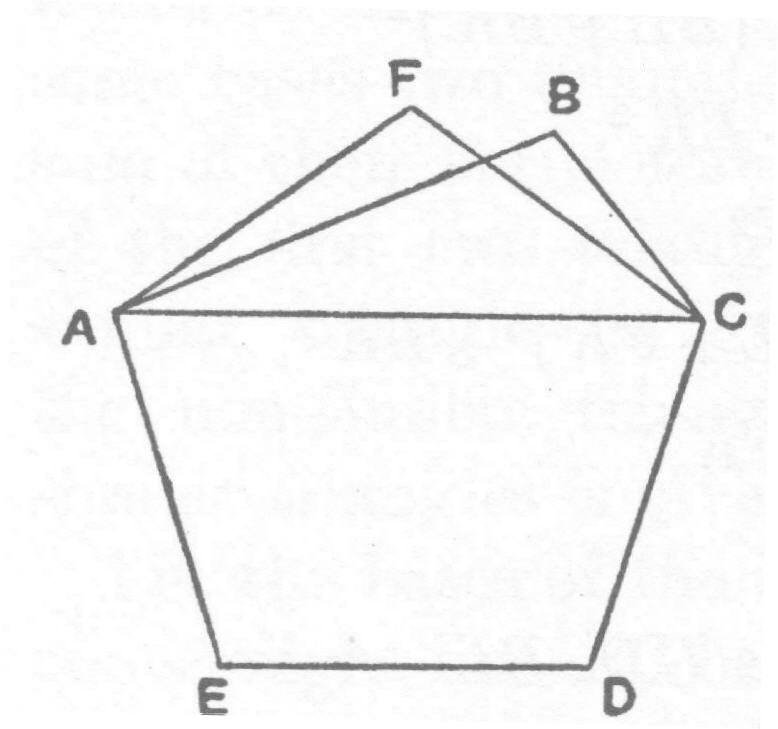- About MAA
- Membership
- MAA Publications
- Periodicals
- Blogs
- MAA Book Series
- MAA Press (an imprint of the AMS)
- MAA Notes
- MAA Reviews
- Mathematical Communication
- Information for Libraries
- Author Resources
- Advertise with MAA
- Meetings
- Competitions
- Programs
- Communities
- MAA Sections
- SIGMAA
- MAA Connect
- Students
- MAA Awards
- Awards Booklets
- Writing Awards
- Teaching Awards
- Service Awards
- Research Awards
- Lecture Awards
- Putnam Competition Individual and Team Winners
- D. E. Shaw Group AMC 8 Awards & Certificates
- Maryam Mirzakhani AMC 10 A Awards & Certificates
- Two Sigma AMC 10 B Awards & Certificates
- Jane Street AMC 12 A Awards & Certificates
- Akamai AMC 12 B Awards & Certificates
- High School Teachers
- News
You are here
The Sagacity of Circles: A History of the Isoperimetric Problem - The Work of Zenodorus
Although the extant commentary of Theon of Alexandria gives only limited proof of Zenodorus’ aforementioned proposition, it does contain Zenodorus’ work on two other key aspects of the isoperimetric problem, namely the question of equilateral and equiangular polygons and the problem of the sphere. The commentary begins with the statement that “of all rectilinear figures having an equal number of sides and equal perimeter, the greatest is that which is equilateral and equiangular” [Thomas, 395]. The first portion of this proposition, namely that of all polygons of the same number of sides an equilateral polygon has the greatest area can be proven using the abovementioned lemma concerning the areas of isosceles and scalene triangles. First, assume that two sides of the “maximum polygon” ABCDE, shown here as AB and BC, are unequal (See Fig. 3). Draw the line AC and construct an isosceles triangle AFC such that AF + FC = AB + BC. By Zenodorus’s first lemma, the area of the triangle AFC is greater than the area of he triangle ABC, and thus the area of the polygon was “increased by construction,” creating a contradiction with the original hypothesis holding that the area was a maximum [Heath, 212].

Figure 3. “It is equilateral,” from [Heath, 212]
Similarly, the proof (see Fig. 4) that of all polygons of the same number of sides, an equiangular polygon has the greatest area makes use of Zenodorus’s second lemma, concerning the areas of similar triangles. As Heath summarizes, “let the maximum polygon ABCDE [shown to be equilateral above] have the angle at B greater than the angle at D. Then BAC, DEC are non-similar isosceles triangles.” Construct two isosceles triangles FAC and GEC similar to one another on bases AC and CE respectively such that the sum of their perimeters is equal to the sum of the perimeters of triangles BAC and DEC. Then, concludes Zenodorus, “the sum of the areas of the two similar isosceles triangles is greater than the sum of the areas of the triangles BAC and DEC [by the second lemma]” and the area of the polygon has been increased by construction, once again contradicting the original maximum hypothesis [Heath, 212].

Figure 4. “It is equiangular,” from [Heath, 212]
Beyond proving that “of all polygons of the same number of sides and equal perimeter the equilateral and equiangular polygon is the greatest in area” [Heath, 207] as was demonstrated above, Zenodorus also dealt briefly with the notion of the sphere. As Theon quotes, “Now I say that, of all solid figures having an equal surface, the sphere is the greatest.” Accordingly, Zenodorus made use of “theorems proved by Archimedes in his work On the Sphere and Cylinder” [Thomas, 395], thus extending the isoperimetric problem to three dimensions.
Jennifer Wiegert, "The Sagacity of Circles: A History of the Isoperimetric Problem - The Work of Zenodorus," Convergence (July 2010)




